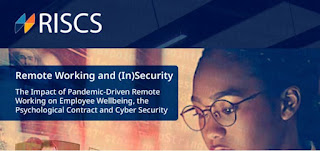Avoiding the shock of the new – a historical perspective on state cyber operations. Neil Ashdown
When was the first cyberattack?
It also might depend on how far you think the public record is complete in this area.
It was this knotty tangle of conceptual disputes, secrets, and mysteries that participants sought to address at a recent workshop organised by the University of Warwick: ‘Cyberattacks and covert strategies in perspective: the long history of the future’.
The workshop brought together academics from intelligence studies and history, cybersecurity and cyber conflict studies, and security studies more broadly. Among other themes, the panels at the event examined the early roots of state cyber operations, focusing primarily on the US and the UK.
As the workshop organisers noted, it is important that academics looking at cyber operations not succumb to the ‘shock of the new’. The means of a state cyber espionage operation may be new, but espionage, deception, and subversion are all very old. The history of state cyber operations is largely one of intelligence organisations adapting their long-established methods to the digital environment. For that reason, many of the apparently intrinsic characteristics of cyber operations might better be understood as characteristics of intelligence operations and subversion.
Yet at the same time, when it comes to digital technologies and cyber operations, the technical details really matter. There are important differences between historical intelligence activities – even ones targeting precursors of the modern Internet, such as telegraph networks – and what is possible in the cyber domain. Teasing out these differences requires an appreciation of the technical details.
Several participants remarked positively on the size of the Royal Holloway contingent at the workshop. Many of the Royal Holloway group participate in the UDG – a reading group that looks at the connections between cyber, intelligence, and security – and we appreciated the chance to discuss these issues with experts from different fields.
It was great to see that those experts associated the Royal Holloway name with excellence in information security. Yet at the same time, I think the other participants were pleasantly surprised to see that our group also contained people working on geopolitics, international security, and intelligence studies. This really speaks to the value proposition of the CDT as an interdisciplinary group.
The linguistic challenges of talking about ‘cyber’ often lead to situations where people are talking past each other, using the same words for different concepts – or vice versa. And in this area, we tend to get caught up in the tyranny of current events – ‘have you seen the latest attack/paper/announcement?’
As such, it was a real pleasure to attend an event where people took the time to really listen to each other, and where we had the luxury of thinking about these important issues in their longer historical context.
We’d like to thank the organisers and we look forward to the next similar event!
--
If you’d like to know more about the event, are interested in the history of intelligence and cyber, or would like to participate in the UDG discussion group, please get in touch at neil.ashdown.2019@live.rhul.ac.uk



Comments
Post a Comment